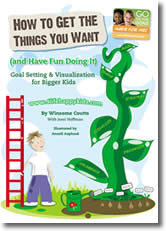Effective Communication with Children: Tips and Strategies
As a parent, I've learned that effective parenting tips are key. Studies show that positive talks between parents and kids lead to better results. This is true in many areas of a child's life.
Using child development strategies helps create a supportive space. This strengthens the bond between parents and kids. It also positively affects a child's emotional and mental health.
Key Takeaways
Positive communication is vital for a child's growth.
Effective parenting tips can enhance parent-child bonds.
Child development strategies can be learned and applied.
A supportive environment promotes healthy emotional growth.
Parents greatly influence their child's well-being.
Understanding the Importance of Communication
In the journey of child development, effective communication is key. Research shows that talking with children and teens is very important. It helps us understand how to talk to kids in a way that supports their growth.
The Role of Communication in Child Development
Talking well is vital for kids' development. It lets them take part in their health care and decisions. It also builds a strong bond between parents and kids, which is good for their emotional health.
By talking well, parents help kids learn important skills. These include solving problems and sharing their feelings. This helps kids grow in many ways, like socially, emotionally, and mentally.
Benefits of Effective Communication
Talking well with kids has many benefits. It helps them express themselves better and be more open. When kids feel heard, they tend to feel better about themselves and their abilities.
Some key benefits of talking well with kids include:
Improved emotional intelligence and well-being
Better social skills and relationships
Enhanced problem-solving abilities
Increased confidence and self-esteem
By using good communication strategies, parents can greatly help their kids grow. It's important for parents to see how vital talking is in their relationship with their child.
Active Listening: A Crucial Skill
Active listening is more than just hearing your child. It's about understanding and responding in a way that encourages open and honest dialogue. When you give your child your full attention, you show them they matter to you.
Techniques for Active Listening
To practice active listening skills, start by making eye contact with your child. This simple act makes your child feel heard and understood.
Turn off the TV or put away your phone when your child talks. This shows you value their thoughts and feelings.
Give your child your full attention.
Use verbal and non-verbal cues like nodding or saying "uh-huh" to show you're engaged.
Paraphrase or summarize what your child has said to ensure understanding.
Tips for Encouraging Open Dialogue
Encouraging open and honest dialogue means creating a safe space for your child to share. Ask open-ended questions to get them to talk more about their experiences and feelings.
Show real interest in your child's life by asking more questions and listening well. This builds trust and strengthens your bond.
"If I make eye contact and give my child my full attention, I'm communicating, 'You are important to me.'"
By using these strategies, you can create a closer bond with your child. You also help them develop important communication skills.
Choosing the Right Language and Tone
Using language and tone that fits your child's age is key for effective parenting tips and building trust with your child. How we talk to our kids shapes their growth and our bond with them.
It's important to match your words to your child's age. Young kids need simple, clear language. As they get older, you can use more complex words and ideas.
Age-Appropriate Language
Choosing the right words for your child's age is critical. Toddlers do best with simple words and phrases. Preschoolers can handle more descriptive language and questions that spark their interest.
For example, tell a toddler, "We're going to the park. Let's play on the swings." Older kids can handle more detail, like, "We're going to the park today. What do you want to do first? Do you want to play on the swings or slide?"
The Impact of Tone on a Child’s Response
The tone you use matters a lot. A positive tone encourages talking, while a harsh one can make kids resistant and hurt.
When your child is upset, a gentle tone helps them feel understood. Say, "I can see you're upset. Can you tell me what's wrong?" This makes them more likely to talk to you.
A negative tone, on the other hand, can push kids away. It's important to adjust your tone based on the situation and your child's feelings.
Being mindful of your language and tone helps create a supportive environment. This not only builds trust but also strengthens your relationship with your child.
Nonverbal Communication Matters
Words are important, but nonverbal communication is even more powerful. It helps us connect with kids in a deep way. It's key to how we send messages and build strong relationships with our children.
Nonverbal cues like body language and facial expressions are very important. They help kids understand and react to us. Being aware of these cues can make our communication better and create a supportive environment for our kids.
Understanding Body Language
Body language is a big part of nonverbal communication. It includes how we stand, move, and look at others. When talking to kids, it's important to know what our body language says.
Maintain Eye Contact: Eye contact shows you're listening and interested in what your child is saying.
Use Open Posture: An open and relaxed posture makes your child feel comfortable and encourages them to share more.
Avoid Negative Gestures: Watch out for gestures that might seem negative, like crossing your arms or avoiding eye contact.
Using Facial Expressions Effectively
Facial expressions are also very important. They show a lot of emotions and can change how our message is seen.
To use facial expressions well:
Be Authentic: Make sure your facial expressions match your message and feelings.
Show Empathy: Use expressions that show you understand and support your child.
Manage Your Reactions: Pay attention to how you react, even in tough talks, to stay calm and supportive.
By understanding and using nonverbal communication, like body language and facial expressions, we can improve our talks with kids. This helps us use positive reinforcement techniques to encourage good behavior and grow our bond with them.
Creating a Safe Environment for Communication
Creating a safe and trusting space is key for talking with kids. When kids feel safe, they share their thoughts and feelings more easily.
To make this space, it's important to build a family culture of respect and understanding. As one source says, it's vital to talk to kids with respect and listen to them with love.
Establishing Trust and Safety
Building trust with your child is the first step to honest talks. Here are some ways to do it:
Be Approachable: Make sure your child feels okay coming to you with their worries or feelings.
Be Consistent: Being consistent in how you react helps kids know what to expect.
Validate Their Feelings: Show your child that you get and respect their emotions.
Encouraging Children to Share Their Feelings
It's important to help kids share their feelings for their growth and your bond with them. Here are some tips:
Practice Active Listening: Listen fully to your child and show you're really there.
Create Opportunities for Dialogue: Make time to talk with your child, doing things together that spark conversation.
Be Patient and Non-Judgmental: Let your child share without interrupting or judging, making them feel safe to open up.
By using these strategies, you can make a safe and supportive place for open and honest talks with your child.
Tailoring Communication to Different Ages
It's important to know how children grow and change. As they get older, their needs and skills shift. This means parents must adjust how they talk to them.
Good communication is vital for a child's growth. It's key to match communication methods to their age. Jean Piaget's work shows children go through stages with different abilities.
Communicating with Toddlers
Toddlers start to learn new words every day. They are exploring their world. Talking to them should be simple and clear.
Using real-life examples and actions helps toddlers grasp complex ideas. For example, saying "let's wash our hands" while washing them helps them connect words to actions.
Tips for communicating with toddlers:
Use simple and clear language
Respond to their gestures and attempts to communicate
Use actions to demonstrate concepts
Engaging Preschoolers in Conversation
Preschoolers are full of curiosity and love to explore. Talking to them means asking open-ended questions and listening to their answers.
It's good to encourage preschoolers to share their thoughts and feelings. This boosts their confidence in talking. Make sure they feel safe and supported when they speak.
"The way we talk to our children becomes the way they talk to themselves." - Peggy O'Mara
Communicating with Teenagers
Teenagers are figuring out who they are and may test boundaries. Talking to them needs empathy, understanding, and respect for their views.
Listening well is key when talking to teenagers. It's important to hear their worries, validate their feelings, and guide them without judging.
Effective strategies for communicating with teenagers:
Listen actively and respond thoughtfully
Show empathy and understanding
Respect their perspectives and opinions
By adjusting how we talk to children at different ages, we can build strong bonds. This helps them grow and develop well.
Using Storytelling as a Communication Tool
Stories can be a strong way to foster connection with kids. They make complex ideas simple and relatable. This makes storytelling a key tool for parents and caregivers.
Stories can spark a child's imagination and teach them important lessons. They help kids think about their feelings and experiences. This leads to a better understanding of themselves and others.
The Power of Narratives
Stories grab young minds, making them a great way to communicate. Through tales, kids can explore different situations safely. This exploratory learning is key for their growth, as it lets them learn from others' experiences.
Stories are powerful because they share complex ideas in easy-to-understand ways. Caregivers can tackle tough topics or teach morals through engaging stories. This approach avoids direct lectures.
Techniques for Engaging Storytelling
To make storytelling work best, use positive reinforcement techniques. Praise the child for their interest in the story. Also, ask questions that spark more conversation.
Use relatable characters and scenarios to make the story more accessible.
Encourage children to participate by asking them to predict what might happen next.
Make the story interactive by incorporating sounds, voices, and expressions.
By using these techniques, you can make storytelling more fun and educational. It strengthens your bond with the child and boosts their communication skills.
Addressing Difficult Topics
Talking about tough subjects with kids can be hard. But, it's a chance to build open and honest dialogue. We want our kids to feel safe sharing their thoughts or worries with us.
When we talk about hard topics, like health or safety, we must be careful. We need to be honest but also think about how our words might affect our child's feelings. Here are some effective parenting tips for these talks:
Strategies for Sensitive Conversations
Choosing the right time and place for tough talks is key. Make sure you both have time to talk without being interrupted. Start by checking if your child already knows about the topic. Be ready to clear up any wrong ideas they might have.
Be honest and careful about what you say, based on your child's age and understanding.
Use language that's right for their age to explain things.
Listen well to what they say, and show you value their feelings.
Encouraging Questions and Curiosity
It's important to make our kids feel free to ask questions. This means being open and not judging them. When they do ask something, answer thoughtfully and don't shut down their curiosity.
Thank them for their curiosity and tell them it's okay to keep asking.
Be ready to keep talking, as one conversation might not cover everything.
Use these chances to teach them how to think critically and solve problems.
By using these methods, you can help your family have open and honest talks. This way, your kids will grow up to be confident and well-informed.
Encouraging Independence in Communication
As a parent, helping your child talk on their own can really boost their confidence. It makes them feel important and understood.
Supporting Your Child’s Voice
To help your child's voice, listen actively and think before you speak. This makes them feel heard and encourages them to speak up more. Using positive reinforcement techniques, like praise, makes them feel supported.
Letting your child share their thoughts and feelings helps them grow stronger. This can make your communication better and your bond stronger.
Building Confidence in Expression
Building confidence in talking means giving your child chances to practice. Encourage them to share their thoughts on different subjects. Give feedback that helps them speak more clearly.
Using positive reinforcement techniques, like specific praise, boosts their confidence. For instance, saying, "I really appreciate how you explained that. It helps me understand your perspective better."
Creating a space where open communication is valued helps your child express themselves well. It also builds their self-confidence.
Utilizing Technology for Communication
In today's world, technology is key for better communication with our kids. As parents, we must learn to use digital tools well. This helps us use effective parenting tips and support child development strategies.
Technology gives us many ways to connect with our children. From learning apps to messaging apps, there's a lot to choose from. But, it's important to balance screen time with real-life talks to help our kids grow.
Effective Use of Apps and Tools
There are many apps and tools that help us talk and learn with our kids. For example, apps that help with storytelling or learning can be great. When picking these tools, think about a few things:
Age appropriateness: Make sure it's right for your child's age.
Educational value: Choose tools that help them learn and grow.
Engagement: Pick apps that make them do things, not just watch.
Using these digital tools, we can make learning fun and interactive. This helps our kids grow and learn, following child development strategies.
Balancing Screen Time and Direct Interaction
Technology is powerful, but we must also talk and play with our kids. Too much screen time can hurt their social and emotional growth. Here's how to find a good balance:
Set limits on screen time so it doesn't take over.
Make sure they do things that help them grow physically and socially, like playing outside or with friends.
Watch or play digital content together to make learning fun and bond.
By following these effective parenting tips and being careful with technology, we can create a good place for communication. This helps our child's overall well-being.
Common Challenges and How to Overcome Them
Talking to kids can be tough, like when they don't want to share. Active listening skills are key to getting past these hurdles. When kids feel they're being heard, they're more likely to talk openly.
Dealing with Resistance to Communication
Yelling and threats can make kids shut down. It's important to be kind and understanding instead. Create a safe space where your child feels free to speak their mind.
This means building trust with your child and being patient and consistent. Try to understand why your child might be resistant. Are they stressed or upset about something? By showing you care about their feelings, you can help them feel more at ease.
FAQ
How can I improve my active listening skills when communicating with my child?
To improve active listening, keep your eyes on your child. Stay away from distractions. Show you care about what they say and feel. This makes talking easier and safer for both of you.
What is the best way to adapt my language to my child's developmental stage?
Choose words that fit your child's age and understanding. Young kids need simple words. Older kids can handle more complex ideas.
How can I use nonverbal communication effectively when interacting with my child?
Your body and face say a lot. Smile and stand open to show you're welcoming. This helps your child feel at ease.
How can I encourage my child to express their feelings and thoughts openly?
Make a safe space where they feel heard. Be kind, listen well, and accept their feelings. This lets them share openly with you.
What are some effective strategies for communicating with teenagers?
Respect their growing freedom. Ask open questions and show you're interested. Avoid being too pushy or dismissive to keep them open to talking.
How can I use storytelling to convey important messages to my child?
Stories are great for teaching kids. Use characters and stories they can relate to. This makes lessons more fun and easy to remember.
How can I address difficult topics with my child in a sensitive and supportive way?
Be honest but gentle. Talk openly but watch their feelings. Encourage them to ask questions and offer support when needed.
How can I support my child's independence in communication?
Help them speak up by being supportive. Listen well and praise them. This builds their confidence in talking.
What role can technology play in enriching communication with my child?
Tech can help, but don't forget face-to-face talks. Use apps for video calls or messaging to stay connected and communicate positively.
How can I overcome common challenges in communicating with my child, such as resistance to communication?
To deal with resistance, listen well and be understanding. Be friendly and patient. Try to see why they might be hesitant.
What are some effective ways to build trust with my child and encourage open communication?
Trust comes from being reliable and supportive. Create a safe space for them to talk. Show you're really interested in what they say and feel.




